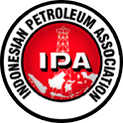Upstream Oil and Gas Investment as the Key to National Energy Resilience
Investment in the oil and gas sector strengthens Indonesia’s national energy resilience. One main reason is the high cost of exploration and production, coupled with significant potential risks. Discovering and developing new oil and gas reserves requires substantial capital and advanced technology.
Investment and technology are also essential to reactivate aging oil and gas fields. Indonesia’s fields have been operating for decades and are experiencing declines in natural production. The government plans to “revive” these mature fields, requiring advanced technology and operational optimization. This can only be achieved with sufficient investment to support innovation and further development.
Supporting infrastructure development is another key factor in upstream oil and gas investment. Infrastructure such as pipelines, refineries, and terminals must be expanded to ensure the smooth distribution of oil and gas from producers to consumers. Without adequate infrastructure, exploration and production activities will be hindered, ultimately threatening national energy security.
Recognizing the importance of investment in this sector, the Indonesian government set a target for upstream oil and gas investment of US$17.7 billion in 2024. Unfortunately, this target was not met by the end of 2024.
Several factors posed challenges to achieving the upstream investment target, including
- Global oil price fluctuations: Unstable global oil prices significantly impact investment decisions for oil and gas companies. This uncertainty tends to cause investors to hold back.
- Layered permitting processes: Frequent regulatory changes and lengthy, complex licensing procedures can reduce the attractiveness of investing. Investors need legal and regulatory certainty to operate stably and sustainably.
- Competition from other countries: Indonesia is not alone in attracting upstream oil and gas investment. Other countries, such as Malaysia, Vietnam, and those in the Middle East, offer attractive incentives such as lower taxes and faster licensing processes, making them strong competitors in the global investment race.
- Geological and technological risks: Some exploration areas in Indonesia pose complex geological challenges, such as deepwater regions or difficult-to-access reserves. These require sophisticated technology and high costs, making investors more cautious when committing capital.
- Transition to renewable energy: The rapid development of renewable energy poses an additional challenge to oil and gas investment. This shift makes investors more selective in placing their capital in the industry.
To overcome these challenges, the government has laid out several strategies, including
- Regulatory simplification and accelerated permitting: These measures aim to make the investment process more transparent and efficient. One example is the issuance of 298 Marine Spatial Utilization Activity Approvals (KKPRL) for the oil and gas sector from 2020 to January 2025 as part of the implementation of Presidential Decree No. 1 of 2025 on the Task Force for Downstream Acceleration and National Energy Resilience.
- Provision of incentives: The government offers various fiscal incentives, including tax holidays, royalty reductions, and simplified profit-sharing schemes for investors. These efforts aim to boost the competitiveness of Indonesia’s upstream oil and gas sector compared to other countries.
- Improving legal certainty and political stability: The government is committed to providing legal certainty through clear, stable, and consistent regulations. Furthermore, maintaining political and economic stability is critical to building investor confidence.
Ensuring that upstream oil and gas investment meets its targets will remain a top priority. The broader benefits will eventually be felt by the public, as increased investment in the upstream sector will strengthen national energy resilience and positively impact the economy.
This investment will generate more job opportunities in the oil and gas sector, stimulate economic growth through increased exploration and production activity, and improve public welfare as the industry develops. Thus, investment in this sector will bring long-term benefits for energy and economic stability.
Success in attracting upstream oil and gas investment requires collaboration between the government, investors, and other stakeholders. With the right policies and consistent implementation, Indonesia has great potential to become a leading investment destination in the oil and gas sector while ensuring sustainable energy for the future.

